Advertisement
Study finds male providers less likely to vaccinate, but only for boys
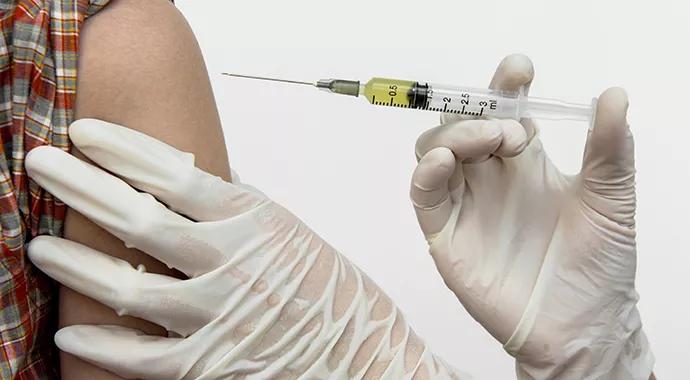
By Ellen Rome, MD, MPH
Advertisement
Cleveland Clinic is a non-profit academic medical center. Advertising on our site helps support our mission. We do not endorse non-Cleveland Clinic products or services. Policy
Despite long-standing FDA approval of the human papillomavirus (HPV) vaccine for youth ages 9 to 26 (since 2006 for girls, and since 2009 for boys), HPV vaccination rates in the U.S. remain stubbornly low. Neither 10+ years of safety data on the vaccine nor the administration of approximately 70 million vaccine doses in the U.S. has had much effect on HPV vaccination rates.
According to the Centers for Disease Control and Prevention, only 53.8 percent of U.S. girls received at least one dose of the three-dose HPV vaccine series in 2012, and only one-third completed all three doses.1 Despite widespread efforts to increase vaccination, these rates remained flat compared with the prior year. Rates in U.S. boys were considerably lower, although they did show an increase from 2011 to 2012 — from 8.3 to 20.8 percent for the first vaccine dose, and from 1.3 percent to 6.8 percent for the full series.
HPV is the most common sexually transmitted infection in the U.S., and the majority of the 6.2 million new infections each year occur in young people (ages 15 to 24).2 HPV types 6 and 11 account for 90 percent of genital warts,3 and types 16 and 18 cause 70 percent of cervical cancers and a majority of vulvar, vaginal, anal, penile and oropharyngeal cancers.4,5
Australia, where HPV vaccine uptake is well above 80 percent, offers an instructive example of the benefits of widespread vaccination, as reductions in cervical abnormalities and genital warts have already been observed in Australian youth,6,7 with reductions in HPV-related cancers expected over the longer term. As long as the U.S. continues to lag woefully behind Australia and other developed countries in its HPV vaccination rates, we are needlessly forgoing some of these public health benefits.
At Cleveland Clinic Children’s, we are striving to reach the federal government’s Healthy People 2020 goal of 80 percent HPV vaccination for both boys and girls. While previous studies have evaluated barriers to HPV vaccination — including lack of knowledge about the vaccine, assumptions about parental attitudes and misconceptions about when vaccination is appropriate8-11 — we recently undertook the first study to look at provider characteristics and practice location (urban vs. suburban) with respect to HPV vaccination rates.
Our study12 assessed HPV vaccination rates among more than 5,000 patients ages 13 to 26 presenting for well-care visits to 15 suburban family health centers and three urban care sites across the Cleveland Clinic health system in 2010. We specifically analyzed vaccination rates among these patients according to site, patient gender and provider gender.
We found that across the overall group of Cleveland Clinic sites studied, HPV vaccination rates exceeded the national rates noted above. Specifically:
Notably, male providers were significantly less likely than female providers to administer the vaccine to their male patients (11 percent vs. 30 percent, P = .002) (Figure 1). Additionally, providers at the suburban sites were less likely to vaccinate both boys and girls than providers at urban sites (18 percent vs. 41 percent for boys, P = .005; 58 percent vs. 81 percent for girls, P = .003) (Figure 2).

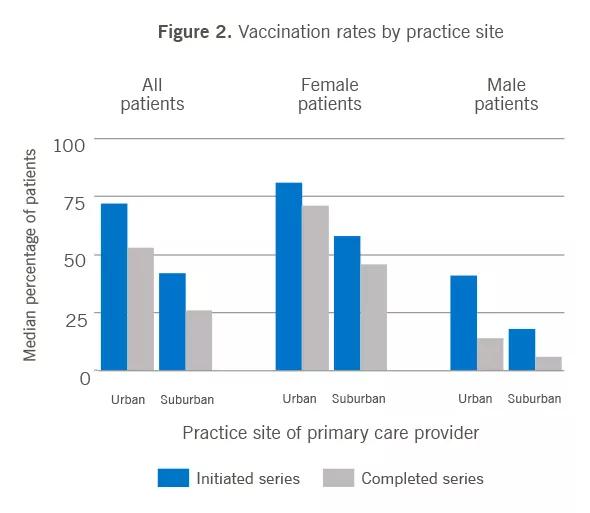
Our finding of higher vaccine uptake in our urban practices was not unexpected, as it reflects our previous findings from a survey regarding intention to vaccinate among mothers of children under age 10. In that study,13 urban parents were more likely to know someone who was infected with HPV or to be aware that their adolescent child might engage in sexual activity in high school, leading them to view vaccination more favorably. Suburban parents, on the other hand, were more likely to view adolescent sexuality as “something that happened to other people’s children,” and to view the HPV vaccine as “too new.”
In contrast, our finding of the discrepancy in vaccination rates for boys between male and female providers was a surprise. It is particularly intriguing that the male providers’ lower vaccination rates for boys did not carry over to girls. These discrepancies in HPV vaccination by provider gender are worthy of further exploration in different and larger groups of providers.
Advertisement
Our findings identify a window of opportunity to target interventions to improve HPV vaccination rates among male providers caring for male patients and among suburban providers regardless of provider or patient gender. More than 10 years of outcomes data now show that the rate of adverse outcomes associated with the HPV vaccine — six events for every 1 million doses administered — is in fact lower than the eight events per 1 million doses associated with other common childhood vaccines, per data from the CDC, which adds that no deaths have been attributed to the HPV vaccine.14
With education focused on this safety record — as well as on the HPV vaccine’s availability and public health benefits for both boys and girls — we may yet achieve the national goal of 80 percent vaccination for youth of both genders.
Advertisement
Dr. Rome is Head of the Center for Adolescent Medicine in Cleveland Clinic Children’s Department of General Pediatrics.
Advertisement
Advertisement
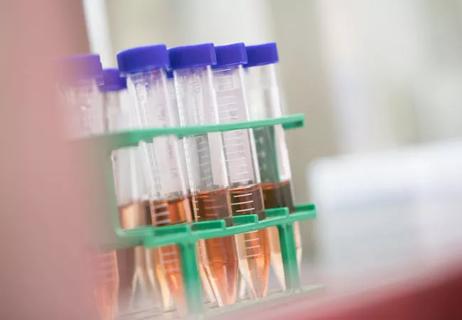
Consider offering your patients enrollment in a leading-edge clinical study
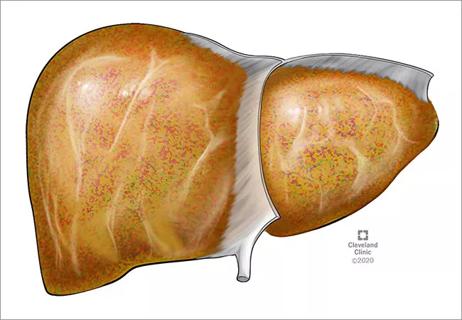
Findings underscore need for early screening and close follow-up

Consider offering your patients enrollment in a leading-edge clinical study
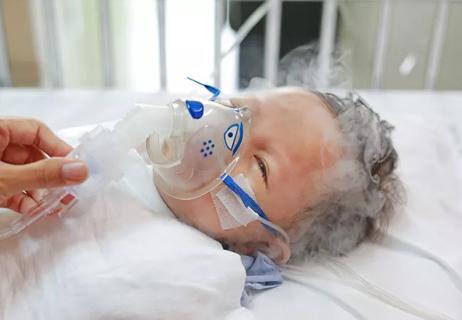
Titanium dioxide nanoparticles exaggerate inflammation induced by RSV
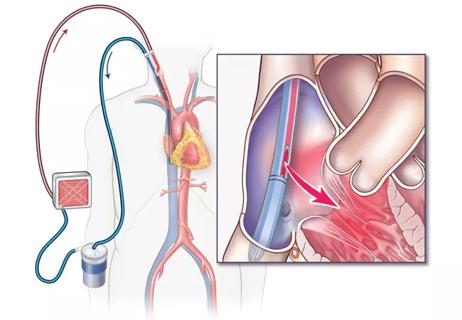
Study supports using the direct thrombin inhibitor
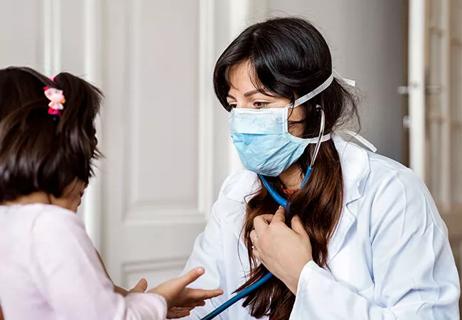
Estimating risk remains elusive

The search for predictive factors continues
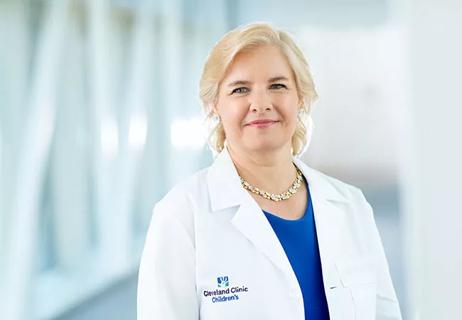
A conservation with Karen Murray, MD